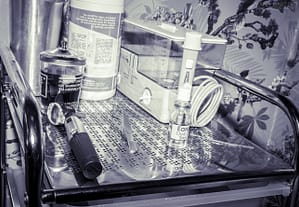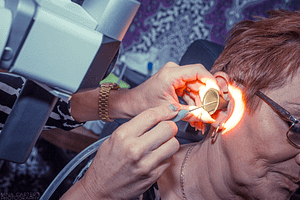If you’re a hearing aid wearer and you’ve noticed your hearing has become muffled, it’s possible that a build-up of earwax (also called cerumen) could be affecting the function of your device. While earwax impaction can pose an array of challenges for people who wear hearing aids, there are steps you can take to ensure your ears and device are protected.
How Do Hearing Aids Lead to Earwax Impaction?
According to hearing aid manufacturers, about 60-70% of all damaged hearing aids are sent for repair due to earwax build-up. The reason why this is so common is because the presence of a foreign object in the ear (such as a hearing device) stimulates the cerumen glands to produce more wax. While the ear is normally self-cleaning, meaning that the earwax usually dries up and sloughs off on its own, in-ear hearing aids obstruct its natural migration out of the ear canal.
This can create clogs in the hearing aid’s receivers and vents, and can cause essential components of the hearing aid to degrade, leading to reduced sound quality and malfunction.
Signs that Earwax Build-Up May Be Affecting Your Hearing Aid
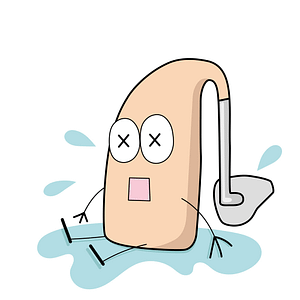
If you are experiencing a cerumen impaction, you might notice that your hearing loss seems worse than usual. This can either be due to the wax affecting the device itself or creating a blockage in your ear canal and reducing your ability to hear.
Signs that earwax impaction could be affecting your device include:
- Reduced sound quality
- Reduced perception of mid and high frequency sound
- Whistling/feedback
- Poor fit inside ear canal
Cleaning Your Hearing Aids
When you first purchase your hearing aids, it is very likely that you’ll receive instructions on how to effectively clean and care for them to prevent earwax impaction. Make sure to clean your devices frequently, using the following steps:
- Gently brush the microphone to remove earwax/debris
- Wipe down the hearing device using a soft cloth
- Make sure to leave the battery door open at night
- Remove any dust/debris from the air vent using a wax pick
- If earwax is clogging the tubing, wash it out
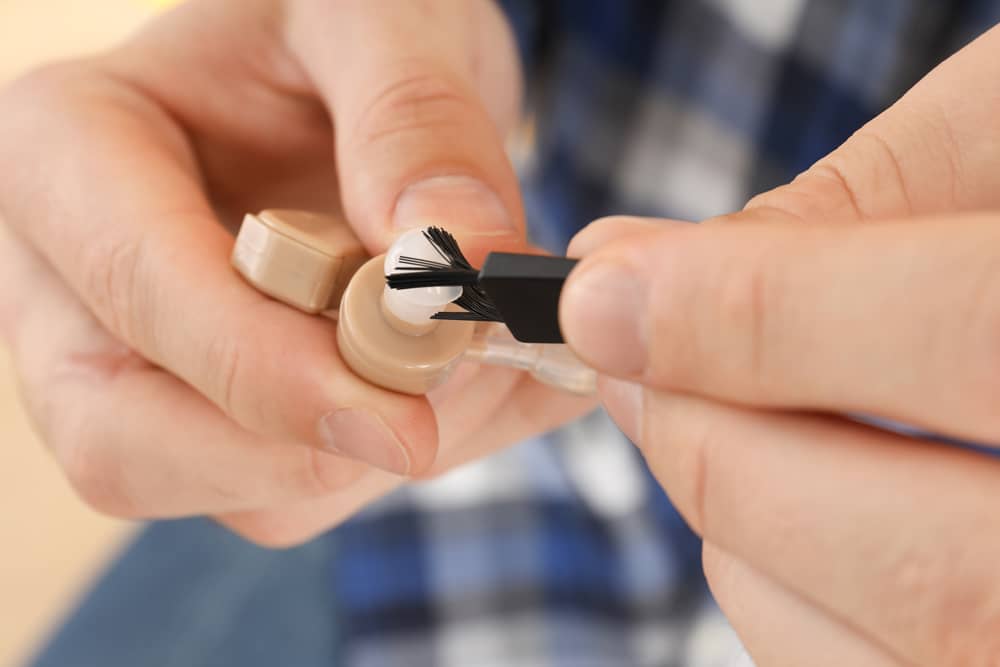
Risks of Untreated Earwax Impaction
If you leave earwax build-up untreated, it is likely to cause further issues with your hearing, as well as earaches, irritation, tinnitus, and even serious infections. Some individuals also experience vertigo, which can increase the risk of falling and injuring oneself.
In case your earwax build-up has lead to an infection, you might experience the following symptoms:
- Intense pain
- Fever
- Being sick
- Hearing loss
- Fatigue
- Discharge and foul smell from ear canal
Cleaning Your Ears as a Hearing Aid Wearer
Keeping your ears clean as someone who wears hearing aids can be tricky. On one hand, you shouldn’t try and remove earwax yourself as this can result in pushing it further into the ear canal or even injuring yourself. On the other hand, your hearing aid may prevent the wax from escaping the ear naturally, resulting in impaction.
Because of this, it can be good for people with hearing aids to attend regular hearing care appointments to have their ears checked for wax build-up. If there is blocked wax in the ear, your audiologist/ hearing care professional might recommend an earwax removal procedure. The procedure type most suitable for you will depend on the nature of the blockage as well as your hearing health history.
Earwax Removal at Hear4U
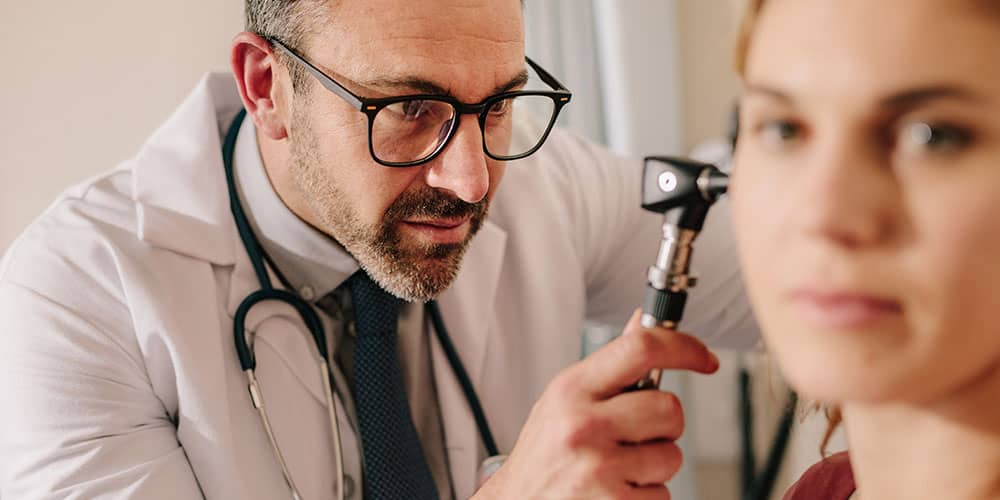
We at Hear4U offer complementary hearing evaluations as well as all four methods of earwax removal. We use cutting-edge equipment to carry out the procedures, ensuring that you receive a fully comprehensive assessment and a smooth, pain-free earwax removal experience.
If you think you might be suffering from impacted earwax and you’d like to have your ears checked, why not come and see us? Click the button below to book your appointment!


